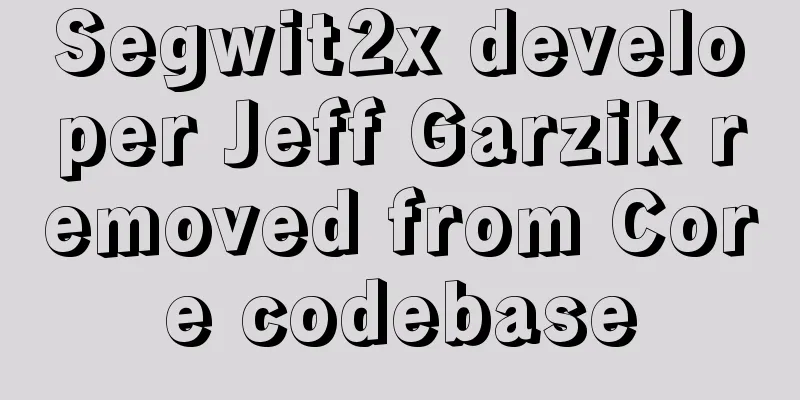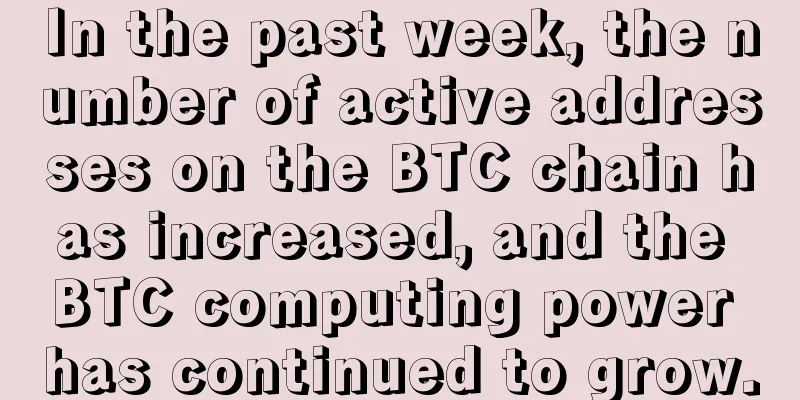Segwit2x developer Jeff Garzik removed from Core codebase

|
The Bitcoin scaling debate heated up over the weekend with a controversial blog post from payment processor BitPay. In it, the company urged users to upgrade their nodes before Segwit is activated to avoid security risks. The controversy was that they directed people to download the btc1 node, which is the node deployed by Segwit2x. BitPay signed the New York Consensus, so it’s not surprising that they want to promote btc1. However, many celebrities accused BitPay of taking confusing and even deceptive means to achieve their goals. BitPay was removed from Bitcoin.org as a result. Jeff Garzik removed from Core codebaseOn the same day, Segwit2x developer Jeff Garzik was removed from Bitcoin Core’s Github codebase. Garzik tweeted that his removal represented an “act of retaliation.” This result is not surprising; Peter Todd pointed out that Garzik opposed Core’s stance on scaling and has not made a significant contribution to the codebase since 2014. But the timing of Garzik’s removal is important. He could have been removed at any time in the past few years for inaction, but he was removed during a period of intensified tensions between the Core and Segwit2x factions. Segwit2x supporters, who control a large amount of network computing power, say that once the Segwit2x hard fork is executed in November, the Core version of Bitcoin will become a “non-functioning minority chain.” Core supporters believe that Segwit2x is an altcoin (some also call it Jeffcoin) or a corporate attempt to take over Bitcoin. Lack of replay protectionThe issue of replay protection has also led to heated discussions. Replay protection ensures that two blockchains and currencies with shared histories remain separate. Without such protection, an attacker could launch a replay attack and broadcast transactions on both chains simultaneously. Bitcoin cash, for example, has implemented this safeguard to prevent replay attacks after a hard fork, and has adopted a new name (somewhat) to avoid confusion. With the Segwit2x fork in November, it is likely that two different versions of the Bitcoin protocol will emerge again. This time, both will insist that they are the real "Bitcoin." Users and exchanges will have to sort out this mess. The lack of naming distinction will cause confusion, but there are still many problems to be dealt with. Currently, Segwit2x has not committed to deploying replay attack protection in the btc1 protocol, which means that Bitcoin Core will have to add protection to the "old" chain. Core recently criticized this position in a blog post:
If the two development teams remain deadlocked, the only ones who will suffer in the end are the users. As the expansion problem "recurred", the price of Bitcoin also fell. Since August 17, the price of Bitcoin has fallen from a high of $4,467 to a low of $3,998. |
<<: BTC.com Mining Pool: I heard that we “mined” BCC on August 20?
>>: Why BCC will not have much impact on BTC mining?
Recommend
A world first: Former OpenSea employee charged with fraud and money laundering for NFT insider trading
According to information disclosed on the officia...
A brief discussion of several major applications of blockchain. Which ones may be pitfalls?
The widespread use of paper became possible becau...
Illustration of the triangle pattern on the palmistry line of wealth for those who are late bloomers
What does the triangle pattern on the wealth line...
Qitmeer—Medina Network Operation Report
Qitmeer Network is a BlockDAG network based on th...
What kind of face will harm the offspring?
What kind of face will harm the offspring? There ...
What do you think of Ethereum’s “Rollup-centric” future?
Rollups solutions must prioritize reduced executi...
Nobel Prize winner in economics: Bitcoin is greatly exaggerated and should be regulated
According to foreign media reports, Joseph Stigli...
Analysis of the facial features of lustful women
As one of the traditional physiognomy techniques, ...
Will scars on the face have an impact on one’s fortune?
Will scars on the face have an impact on one’s fo...
Conference Preview | 2020 Wenzhou Golden Autumn Mining Summit Forum
From September 13 to 16, a four-day POW industry ...
Celebrity faces that bring wealth
1. Andy Lau Judging from Andy Lau's facial fe...
You must come and see what facial features a shameless villain has
1. Narrow forehead and short philtrum People with...
Are people with full foreheads economically well off?
The forehead has a great influence on a person. T...
The baby's face will conflict with his parents
Some people are born with a weak bond with their ...
Palm peeling analysis
Palm peeling analysis 1. The cause of peeling pal...









